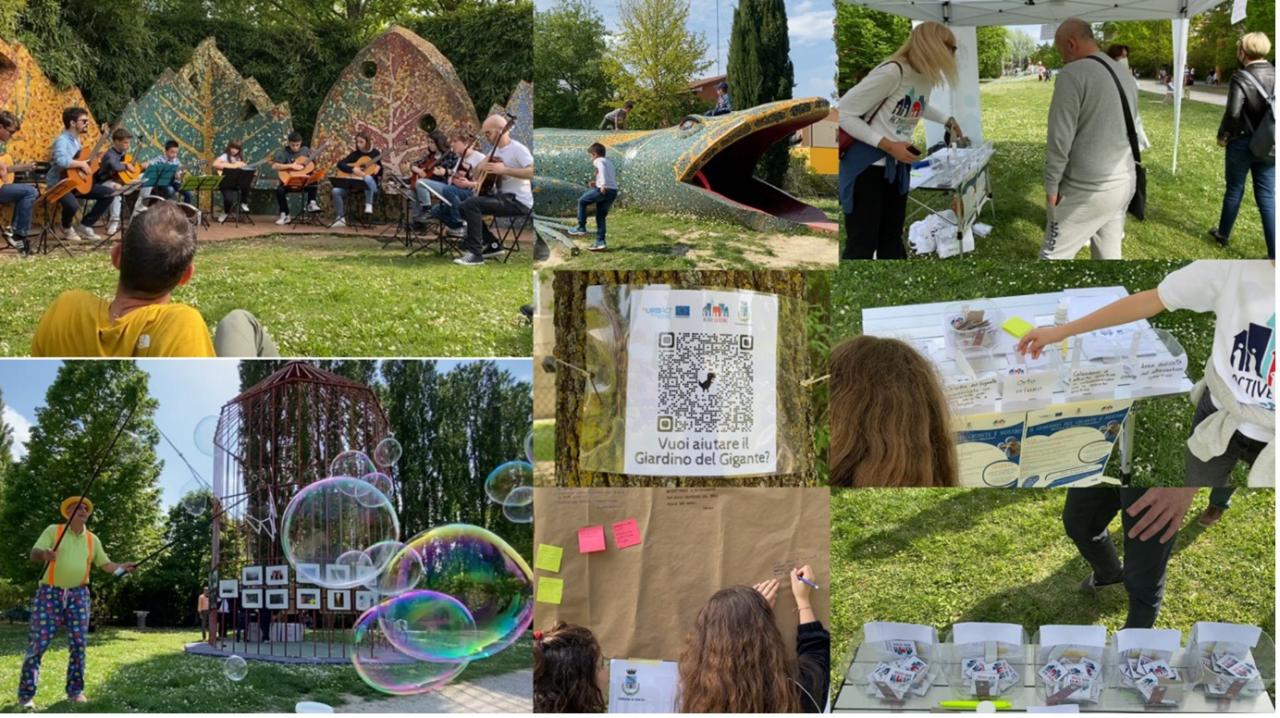On 6-9 June 2024, citizens across the EU-27 will be casting their votes in the European elections. Among the many issues on the ballot, the newly elected European Parliament will have a say on the future of European cities through the Cohesion Policy and Interreg programmes like URBACT. Click here for more on how to vote in the 2024 European elections.
Whether you are a first-time voter or a seasoned member of your local council, get into the election season with six effective and inspiring ways cities are engaging citizens in the democratic process and urban governance. Through these stories, emerging from cities involved in URBACT’s ActiveCitizens Action Planning Network (2019-2022) and the Agents of Co-Existence Network (2023-2025), we see the transformative potential of active citizen engagement and empowerment in democratic life (well beyond the election cycle).
1. Capturing citizens on film
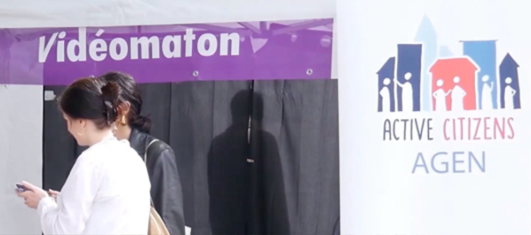
Agen (France): videomaton set up in a public space to record video testimonials of citizens.
Agen (FR) decided to open up conversations with citizens and users in two public squares before imagining and/or building any plans for these places. A videomaton (video booth) was set up in the middle of these two squares, and passers-by were invited to answer a series of questions that were recorded on video. Citizens were asked about how they perceived the square, how it is used and their wishes for potential future transformation.
At times, city decisions are so bound to annual budgets and schedules that they may not leave room for citizens’ input. Agen’s videomaton was interesting for multiple reasons: first, civil servants went out of their offices and regular meeting places and ‘put themselves on the spot’ in the public space to engage with citizens. Second, videos are an effective tool (underused in most administrative areas) for collecting citizens’ voices, needs and wishes. Third, conversing with citizens outside of the established milieus and communication channels can lead to breakthroughs and new ideas.
2. Safari snap-chats
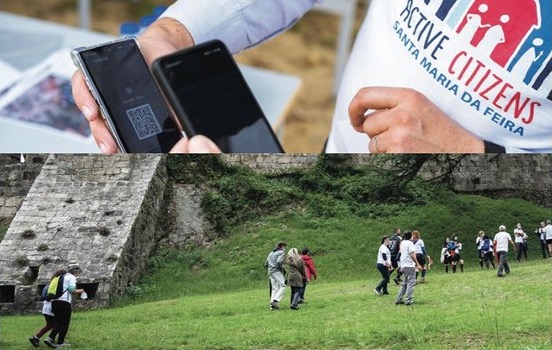
Santa Maria da Feira (Portugal): safari-walk through the vast city green urban area for a participatory diagnosis.
Santa Maria da Feira (PT) and Dinslaken (DE) organised ‘safari walks’ – variant forms of exploratory walks. In the case of Santa Maria da Feira, a large and diverse crowd of citizens took part in a long tour around the park and castle of the city, to collectively diagnose the park and explore its potential future improvements. In the case of Dinslaken, a small group of young people from popular neighbourhoods did a ‘photo-safari’.
Both walks used photography as a tool to enable citizens to make their own diagnosis of positive and negative aspects of public space in their city, facilitating collective sharing and discussion. These two examples show that involving citizens in urban planning projects is not only possible but can also be accomplished through dynamic and active methods, beyond classic neighbourhood meetings.
This practice of organising citizen walks could become the ‘new normal’ for involving citizens in urban planning, completing other methods such as participatory mapping, vision building or playful city modelling.
3. Mixed cultural-participatory events
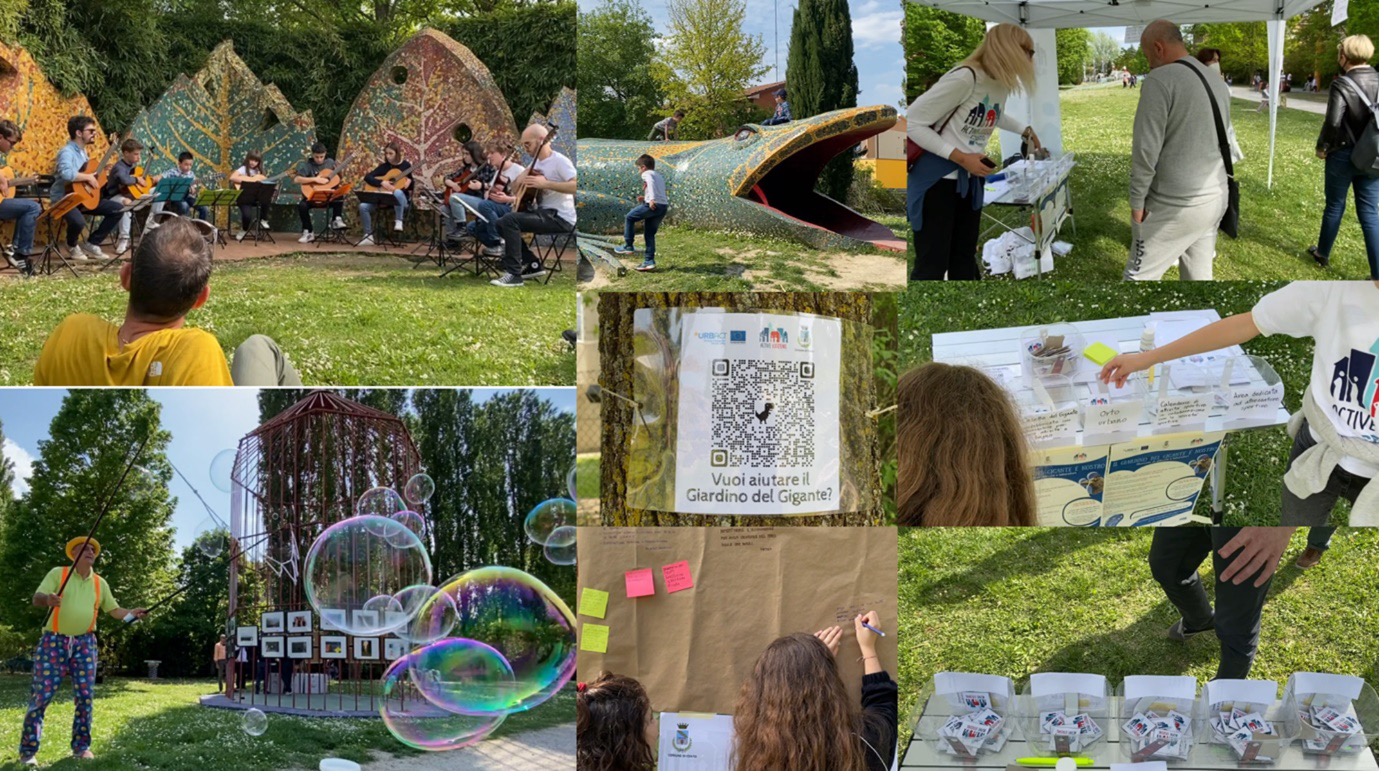
Cento (Italy): the Giants' Garden is ours – a participatory process embedded within a multi-social & cultural event.
Cento (IT) experimented with citizen participation in the Giardino del Gigante. The public park had been abandoned and neglected for some time. Cento had the idea of setting up a public cultural event, in partnership with local associations. The goal was to gather civil servants and citizens together to discuss the park, but also vote on its future.
The ‘trick’ here was to bring music, arts, dance, circus, etc., into the park to create an event for parents and their kids, and other people from the neighbourhood. This worked so well, in fact, during the event a collective of citizens was formed on the spot! They would go on to explore the future of this ‘garden of the giants’.
Why set up a cultural event? Looking beyond the most active citizens is key to democracy. The format of an informal cultural event can go beyond those typically engaged in urban governance issues and reach people known as ‘un-usual suspects’ – who may not regularly contribute to participatory processes.
4. Citizen participation 101: training for elected and city officials
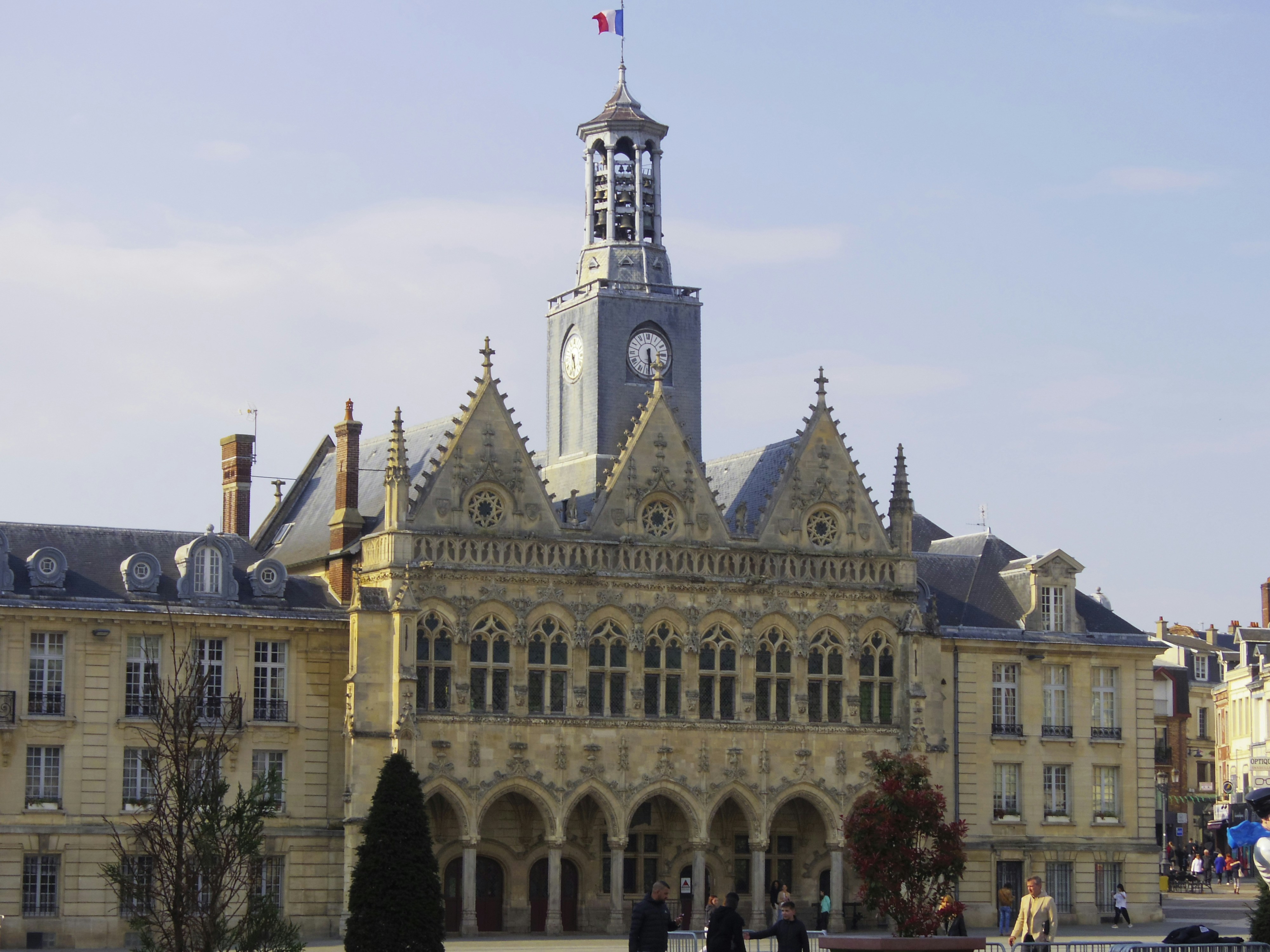
Saint-Quentin, hôtel de ville. Credits: Pierre Vorpuni.
Saint-Quentin (FR) wanted to make sure that no one in the city government could say, ‘I don’t know what participation means or how it works’. The city decided to train all the managers of the city and all its elected officials in participatory democracy and policy design.
A first training session was organised for about 50 civil servants and later the same day, training was provided for all the elected officials of the majority party, including the mayor herself. Civil servant training allowed to imagine and reflect on projects with a potential participatory dimension. It also helped trainees to realise that participation can take multiple forms (with a small group of citizens or a big crowd) over a long period of time or in a very spontaneous one-shot way.
5. Gamification of best practice exchanges and lessons learnt

Pieces of a puzzle on a green table. Credits: Nathalia Segato.
Gdańsk (PL) chose to make a joke of bad practices as the recipient of the ‘OOPS award’ in the first edition of the OOPS Challenge Cup. The award recognised ‘best bad practices’ in citizen participation. In this case, the city was recognised for its attempt to organise a citizen assembly (the third in a series of assemblies). One of the issues with the third assembly was that the topic for discussion was not clearly defined, which led to vague recommendations that were too difficult to implement, which then again led to discouragement and distrust among citizens. As a result, a lot of the goodwill created by earlier assemblies got lost along the way. This example clearly shows where things can take a wrong turn if city administrations are not careful in designing the citizen participation and/or decision-making process.
With this example in mind, the role of civil servants is a main focus of the URBACT Action Planning Network Agents of Co-Existence, running until 2025. Gdańsk and the other partner cities in the network aim to improve the skills and competences of municipal staff, while creating new organisational structures to further boost civic participation and create a more solid basis of democracy.
6. Civic engagement, but make it digital
Further motivated by the desire to involve citizens in decision-making, cities are also using digital platforms to collect feedback and organise participatory initiatives. One notable tool is online map-based questionnaires, which enable cities to overcome challenges such as reaching a larger audience and translating citizen knowledge into actionable insights.
Additionally, cities are investing in Geographic Information System (GIS) technology to integrate experiential data from citizens into decision-making processes, to make better use of citizen knowledge and combine it with expert input. To maximise the benefits of citizen participation, cities are advised to invest in the skills of civil servants, empowering them to effectively use digital tools and GIS analyses for citizen engagement and project planning.
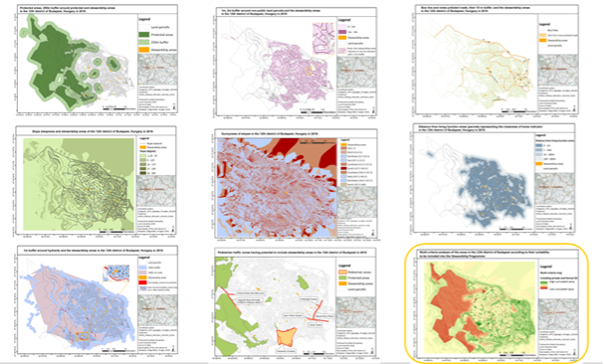
Maps from a research project including a multi-criteria analysis selecting public green spaces of a city district for a community involvement programme. Source: Katalin Bunyevácz.
Active citizens: getting informed and involved
In the abovementioned cities, we’ve seen how revitalising European democracy involves more than just voting. They show a move towards democracy where everyone gets a say and governance focuses on communities.
Participation is a key element of URBACT Action Planning Networks, as proven by the ActiveCitizens partner cities. Participation continues to be a key feature of Agents of Co-Existence and the other 29 URBACT Action Planning Networks currently operating across Europe.
Want to learn more? The URBACT Knowledge Hub has more resources on citizen participation:
- ‘Citizen participation? Hell no!’ game
- Reflections on citizen participation in Europe’s cities
Are you a city practitioner? We also have tools for participatory approach implementation in the URBACT Toolbox.
This article was made possible thanks to contributions from Anja van Hout and Christophe Gouache.

